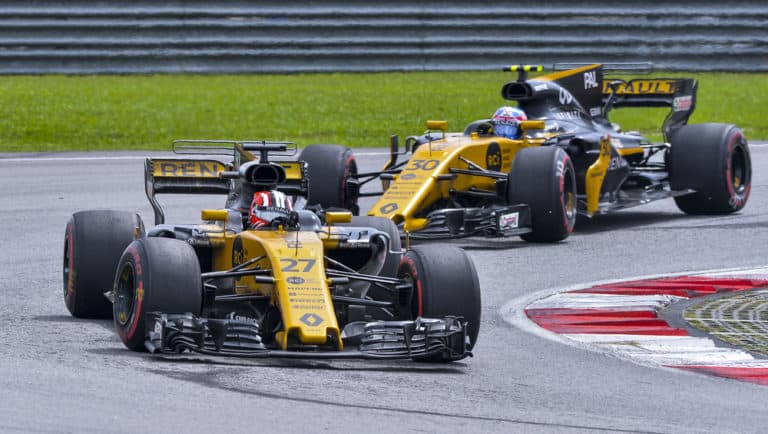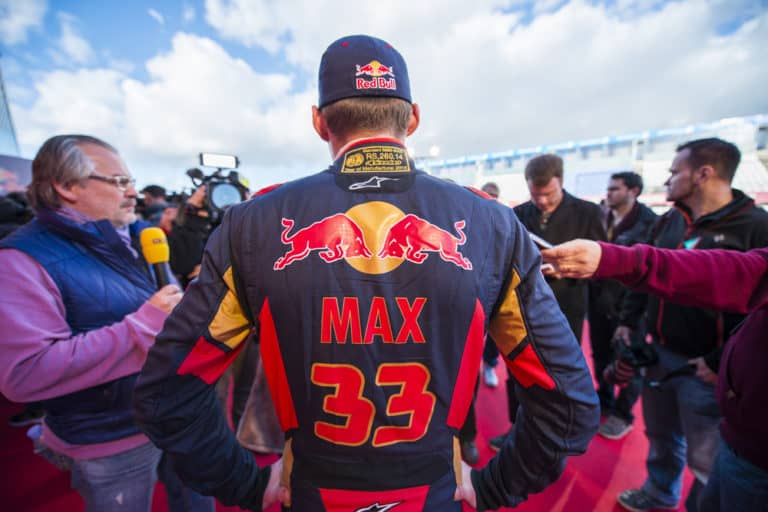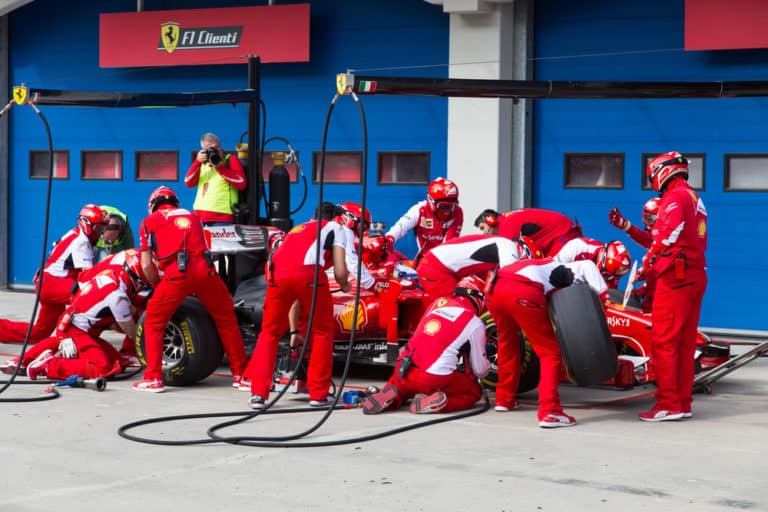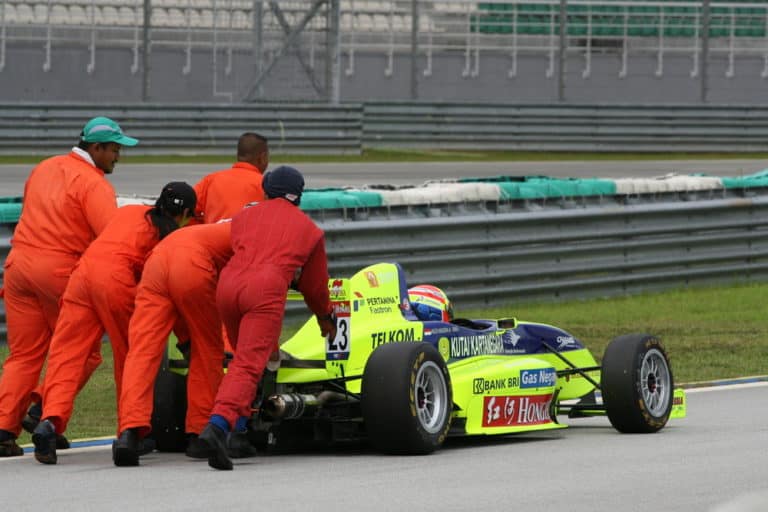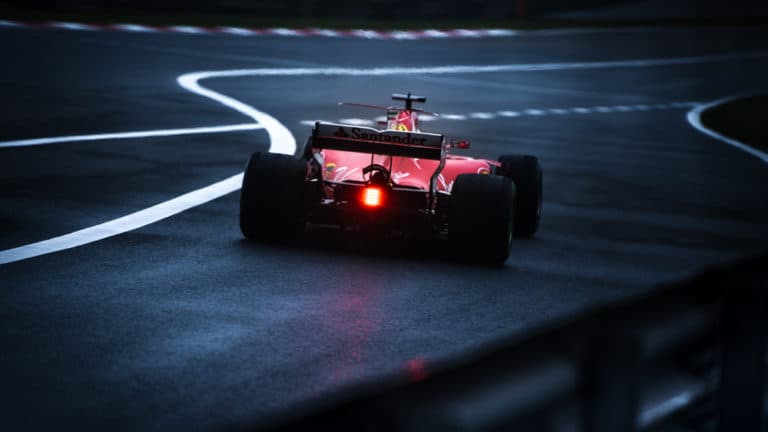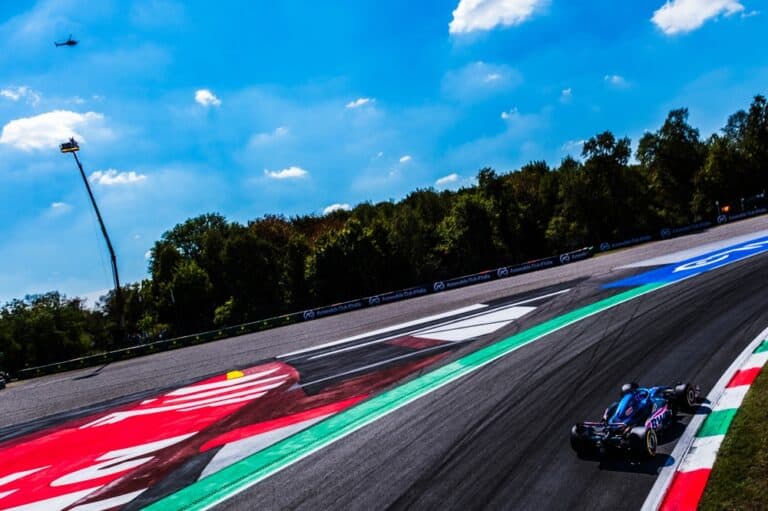F1 cars are incredibly complex machines, as they are designed to be as fast and safe as possible. One of their most intriguing elements is the red lights at the back, as they can raise many doubts about their function and operation.
F1 cars have three rear lights, consisting of LEDs that flash at about 4 Hz. Contrary to popular belief, they do not light up when the cars brake but do so for safety reasons, to improve visibility.
Rear lights are essential, especially in the rain, and although most people don’t know it, they have many functionalities, so let’s see them all!
If you’re looking for some F1 merchandise, check out the awesome stuff at the official F1 store here.
What Are The Red Lights On The Back Of An F1 Car For?
There is a widespread belief that the lights on the back of Formula 1 cars indicate that the driver is braking, just as in road cars and other motorsports, but this is not the case.
The lights on the back of F1 cars come on at certain specific times when there may be a hazard, so their primary function is to make the car visible to increase safety. There are 3 scenarios in which they light up:
In Rainy Conditions
When it rains, visibility is considerably reduced, which, together with the sheer amount of spray that F1 cars release, makes visibility practically nil on many occasions. The poor visibility and the lack of grip caused by the water make these conditions challenging and dangerous.
Therefore, in rainy situations, the lights at the back blink so that drivers can better sense where the other cars are, especially when there are many cars in front, and they lose all visibility due to the spray they release.
When Cars Are Saving Energy
Modern Formula 1 cars have V6 turbo hybrid engines. They use an Energy Recovery System (ERS), which harvests unused kinetic and thermal energy and converts it into extra power that the car can use.
Usually, drivers use this extra power on the straights and recover it later. This kind of battery discharges very quickly, so at the end of long straights, and more so if they are defending against another car, the drivers run out of this power and have to charge it again.
It is when the lights turn on and start flashing, thus indicating to the driver behind that the car is saving energy and will run slower. This usually happens on circuits with long straights, such as Monza, Montreal, or Bahrain.
In The Pit Lane
Drivers use the Pit Lane to exit or enter the garage or make a pit stop during the race. The Pit Lane is a very busy place with little space, where there is a lot of movement of cars and people, so drivers must use a speed limiter while in it, which they activate and deactivate from the steering wheel when entering and exiting the Pit Lane.
When the speed limiter is activated, the rear lights turn on and start flashing, to make the car more recognizable as it is a place where many things happen at the same time. As soon as you leave the Pit Lane and deactivate the speed limiter, the lights turn off again.
How Many Lights Are On The Back Of F1 Cars?
In the 1970s, a single light was introduced on the back of F1 cars to, as mentioned above, improve visibility and safety. It has always been in the rear impact structure and currently consists of 15 LEDs flashing at approximately 4 Hz.
However, in 2019, two strips of red lights located at the tips of the rear wing were introduced to further improve visibility, especially in wet conditions, so currently, F1 cars have three rear lights.
These strips are very thin and elongated but are very powerful, giving a very aggressive look and allowing the size of the cars to be better discerned when there is a lot of rain.
When Do The Lights On The Back Of F1 Cars Turn Green?
On rare occasions, the lights on the back of F1 cars turn green. This happens in some tests and free practice sessions when the car is driven by a rookie driver who does not yet have his full FIA Super License.
The Super License is the highest racing license appointed by the FIA and is like a Formula 1 driver’s license. To obtain it, you must meet specific requirements to show that you are suitable to race in the category without posing a risk to other drivers.
If you want to know more about the Super License, you can check this article or this one.
Why Don’t F1 Cars Have Brake Lights?
In road cars, brake lights are an essential element of safety since many situations can occur in which many people brake at different times depending on what happens, so it is essential that other drivers know when they are slowing down so as not to collide with the car in front.
However, Formula 1 cars do not have brake lights, as they would be redundant and useless. Formula 1 drivers brake at the same points on the circuit all the time, and if any incident occurs, they are going at such extreme speeds that they would not have time to stop if they noticed the brake lights of the car in front.
As dangerous as this may sound, Formula 1 circuits are very safe places since all situations are contemplated, and many of the dangers of a public road, such as animal or pedestrian crossings, are eliminated.

Conclusion
The lights on the back of Formula 1 cars are essential for safety on the track. They improve visibility in rainy conditions and the Pit Lane and inform other drivers whether the driver in front saves energy and runs slower.

